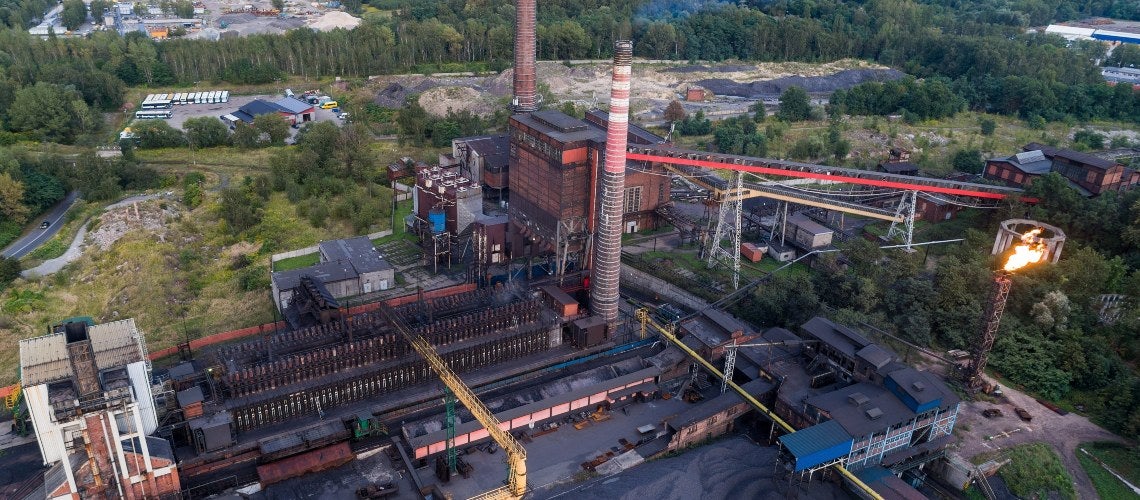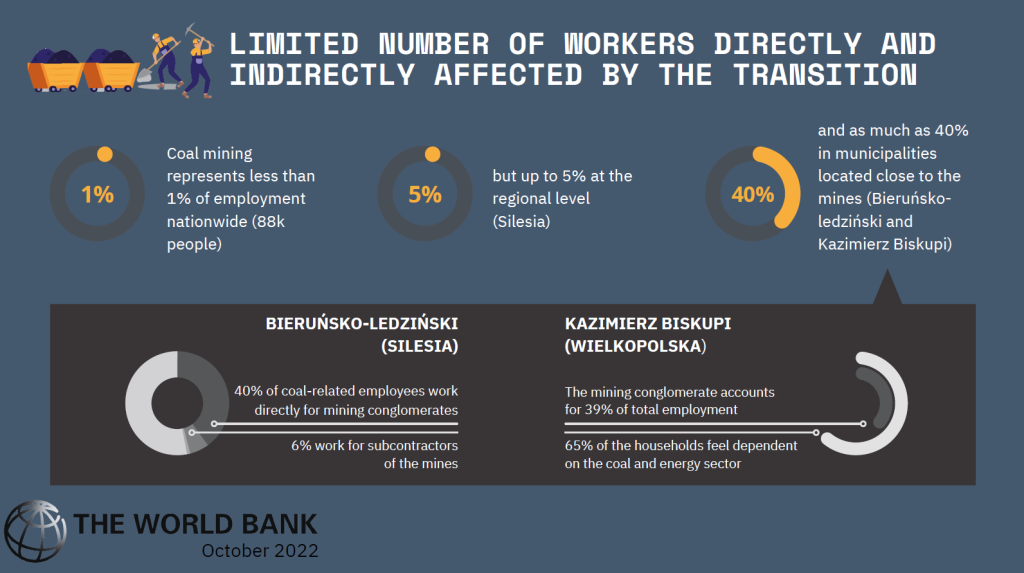 Coal-related jobs are front and center in the disruption brought about by transitioning toward a low-carbon economy. Copyright: Shutterstock
Coal-related jobs are front and center in the disruption brought about by transitioning toward a low-carbon economy. Copyright: Shutterstock
Reducing greenhouse gas (GHG) emissions depends on carbon-neutral energy production, and coal is the most emission-intensive energy source. As Europe’s largest coal producer, Poland provides an important opportunity to understand prospects for a just transition for coal-related workers that leaves no one behind.
Using a data-driven and people-centered approach, a series of recent World Bank studies explored the skills and labor challenges brought about by the transition out of coal in three Polish regions (Wielkopolska, Silesia, and Lower Silesia). Instead of a sectoral approach, these reports call for a local focus on the municipalities located around the mines to support both mine workers and lower-skilled workers who are not employed in the mines or the mining conglomerates.
Limited impact nationally, high impact locally
Coal-related jobs are front and center in the disruption brought about by transitioning toward a low-carbon economy. The impact of coal mine closures on national labor markets is likely limited. In Poland, less than 1 percent of all workers (88,000 people) worked directly in mining conglomerates at the end of 2020, and less than 2 percent worked in the coal value-chain, including those linked indirectly to coal, such as workers in power stations and in companies providing goods and services.
The studies also indicate, however, that coal-related jobs are highly concentrated in a few locations and firms. In mining municipalities, coal-related jobs often represent over 20 percent and sometimes as much as half of total employment. Spatial and market concentration is particularly high in Silesia, where 80 percent of contract value goes to companies located within 20 km of the mines. Furthermore, the 10 most affected subcontractors employ 30 percent of the indirect workforce.
Limited outside opportunities in sluggish local labor markets exacerbate this dominant position of the mining conglomerates and large subcontractors. Regionally, the labor markets perform similarly to the rest of Poland, but people must move to access jobs there. Many displaced workers may not be able to transition easily to new job opportunities.

Coal-related workers are strongly attached to their communities
In fact, coal-related workers and non-mine workers in mining communities mainly want to remain in the communities where they live, work in similar positions or sectors, and value job security—and they are willing to give up a lot for these preferences.
For example, for a resident of any of the four most-affected municipalities in Wielkopolska to accept the same job but with an additional hour of commute, they would require a salary increase of PLN 5,342 per month (or EUR 1,100), which is more than the average monthly salary in the subregion. While somewhat extreme, mine workers and non-mine workers in mining communities in Silesia and Lower Silesia also wanted substantial compensation to accept commuting or relocating to new jobs.
The studies revealed these views through a series of discrete choice experiments with 3,500 mine and power plant workers and 800 workers residing in the most affected nearby municipalities.
Machine-learning tools and one-stop-shops help identify good job matches
In identifying viable transition pathways for affected workers, the reports considered worker skills and leveraged machine learning and online job descriptions. Mine workers have skills mostly like others in the Polish labor market: they are better at machine handling but score worse in advanced digital skills. Recognizing their broad skill profiles, the job matching tool used big data text analysis techniques to identify positions containing tasks most like the position held by a dismissed worker. It then further narrowed down options to in-demand jobs reporting more vacancies than candidates. The studies found viable transition pathways available in current local labor markets for many blue-collar workers (70 to 80 percent of coal-related workers). Tertiary-educated specialists likely need more reskilling given the demand for high specialization.
Based on reviewing international best practices, the studies also derived principles to guide effective support for transitioning workers. Support packages should be comprehensive to include psychological support, balanced between income support and re-employment services, tailored to worker needs, and start before workers are laid off. Effective implementation also requires continuous involvement of different stakeholders, well-coordinated services including one-stop-shops, labor offices that are adequately staffed or leveraged with private providers, and a monitoring and evaluation system with feedback mechanisms.
Next steps: reaching non-mine workers in affected communities
Key challenges going forward will be to provide adequate opportunities for workers, especially non-mine workers in affected municipalities. This group deserves special attention: they are less skilled, they operate in heavily affected and already lagging local economies, and they are not covered by the social agreements supporting mine workers. A local economic development approach will help to provide a just transition for all.





Join the Conversation